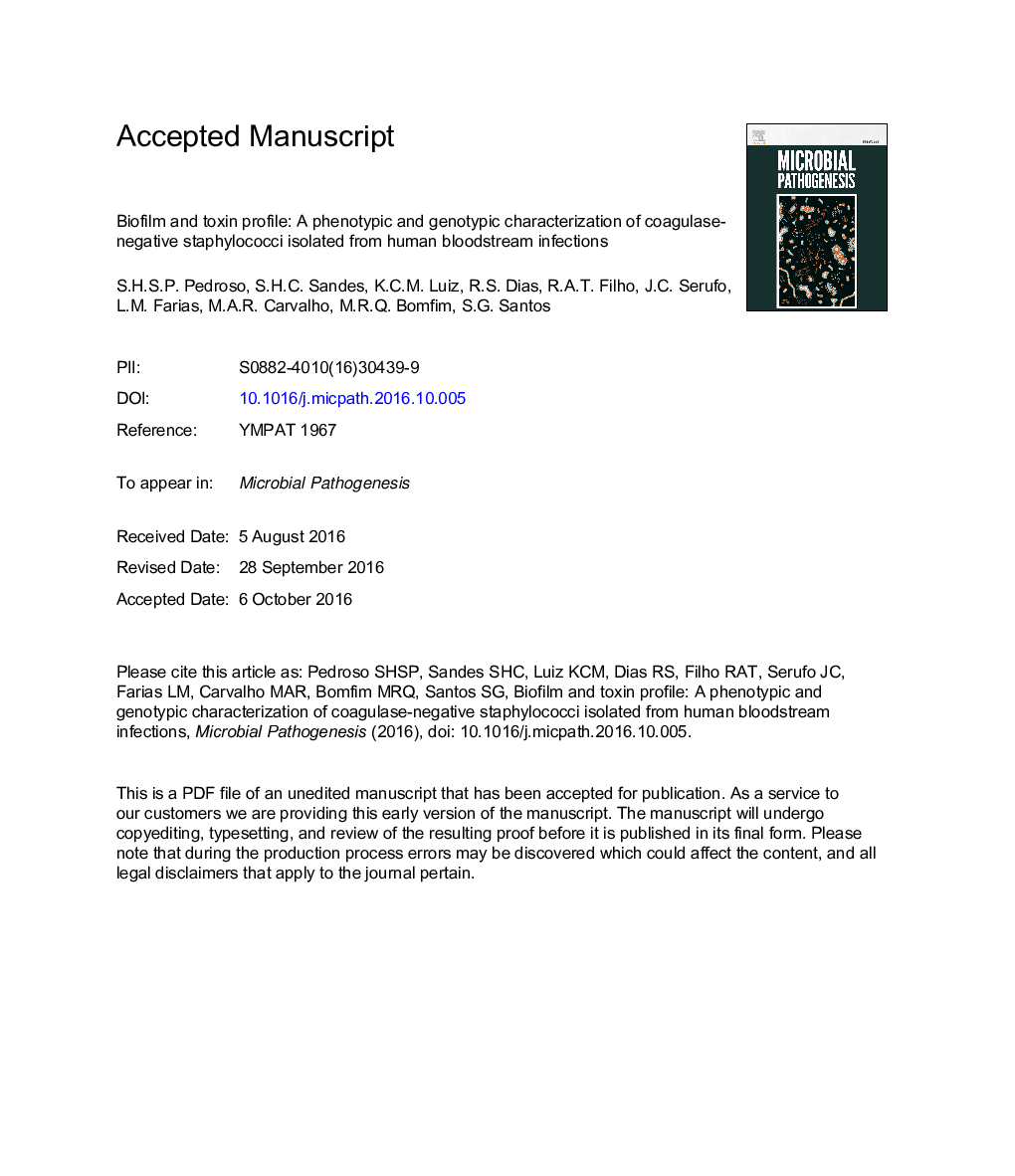| Article ID | Journal | Published Year | Pages | File Type |
|---|---|---|---|---|
| 8750058 | Microbial Pathogenesis | 2016 | 31 Pages |
Abstract
Coagulase-negative staphylococci (CNS) represent one of the most prevalent microorganisms in nosocomial infections worldwide, nevertheless little is known about their pathogenicity features. Thus, our aim was to characterize virulence aspects of CNS isolated from patients with bloodstream infections assisted in hospitals of Belo Horizonte, MG, Brazil. Strains were identified using bioMérieuxVitek® and for biofilm production evaluation, Congo Red Agar (CRA) and polystyrene plates were used. PCR was applied to detect icaA, icaB, icaC, atlE, sea, sec, sed, tsst-1 and agr. For statistical analyses were used hierarchical cluster, chi-square test and correspondence. 59 strains were analyzed, being S. haemolyticus the most prevalent. On CRA, 96.5% were biofilm producer, whereas on polystyrene plate, 100% showed adhesion at different times evaluated. Regarding genotypic analyses, 15.2%, 38.9%, 8.4%, 49.1%, 76.2%, 23.7%, 1.6%, 30.5% and 38.9% were positive for icaA, icaB, icaC, atlE, sea, sec, sed, tsst-1 and agr, respectively. Six clusters were formed and frequency distributions of agr, atlE, icaA, icaB, sea, sec, tsst-1 differed (P < 0.001). In conclusion, all strains were biofilm producer, with high prevalence of atlE, and had potential of toxin production, with high prevalence of sea. According to the group-analyses, icaB showed relationship with the strong adherence in samples.
Keywords
Related Topics
Life Sciences
Immunology and Microbiology
Microbiology
Authors
S.H.S.P. Pedroso, S.H.C. Sandes, K.C.M. Luiz, R.S. Dias, R.A.T. Filho, J.C. Serufo, L.M. Farias, M.A.R. Carvalho, M.R.Q. Bomfim, S.G. Santos,
